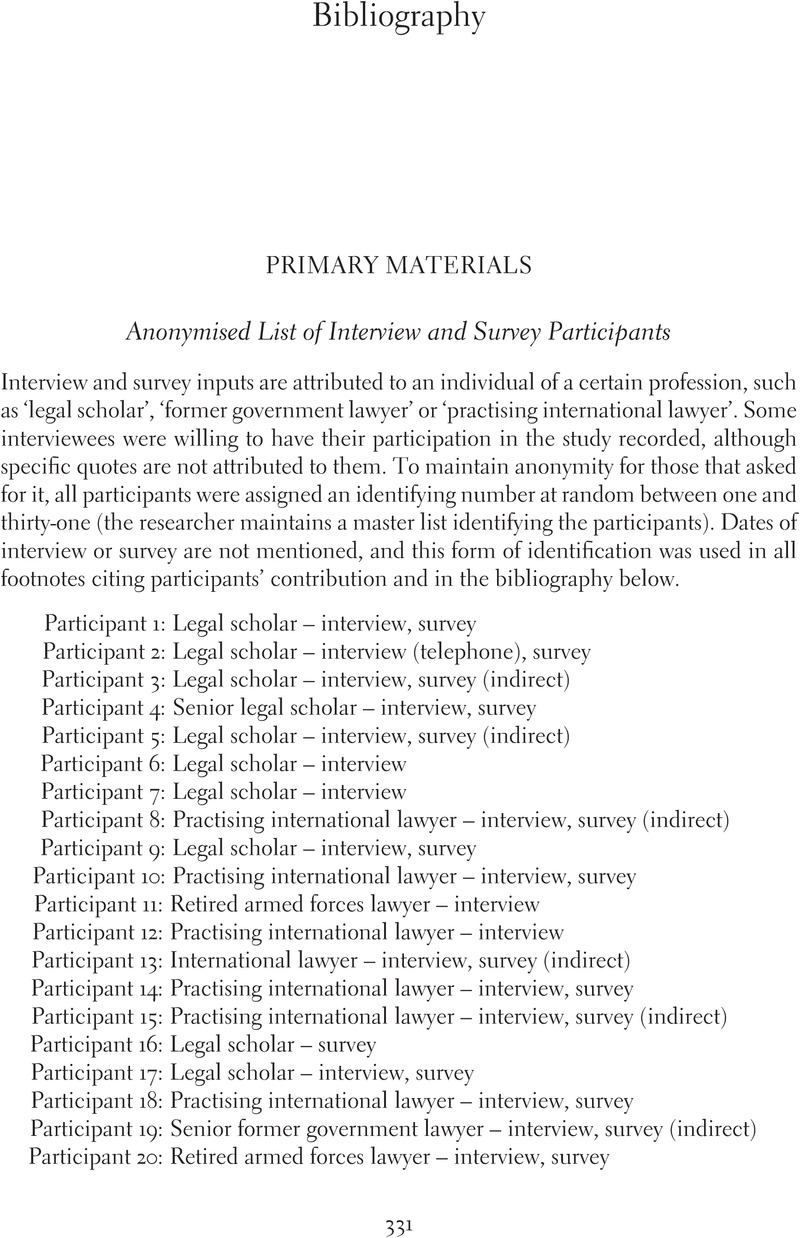Book contents
- Praise for Law, War and the Penumbra of Uncertainty
- Law, War and the Penumbra of Uncertainty
- Law, War and the Penumbra of Uncertainty
- Copyright page
- Contents
- Figures
- Acknowledgements
- 1 Introduction
- Part I Varieties of Uncertainty in the Jus Ad Bellum
- Part II The International Court of Justice, UK-Based Lawyers and the Jus Ad Bellum
- Part III Managing Uncertainty: Reconciling Legal and Extra-legal Reasoning
- Bibliography
- Index
- References
Bibliography
Published online by Cambridge University Press: 31 March 2022
- Praise for Law, War and the Penumbra of Uncertainty
- Law, War and the Penumbra of Uncertainty
- Law, War and the Penumbra of Uncertainty
- Copyright page
- Contents
- Figures
- Acknowledgements
- 1 Introduction
- Part I Varieties of Uncertainty in the Jus Ad Bellum
- Part II The International Court of Justice, UK-Based Lawyers and the Jus Ad Bellum
- Part III Managing Uncertainty: Reconciling Legal and Extra-legal Reasoning
- Bibliography
- Index
- References
Summary

- Type
- Chapter
- Information
- Law, War and the Penumbra of UncertaintyLegal Cultures, Extra-legal Reasoning and the Use of Force, pp. 331 - 352Publisher: Cambridge University PressPrint publication year: 2022



